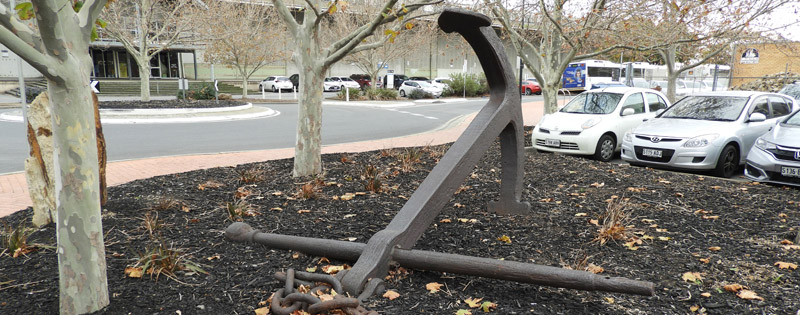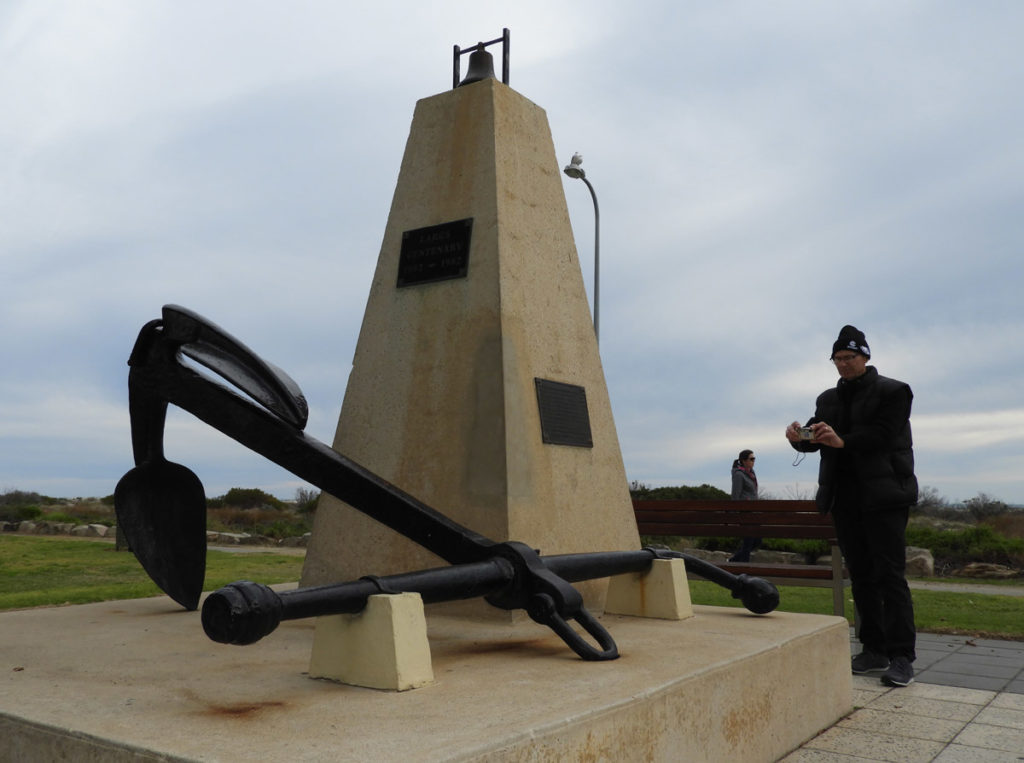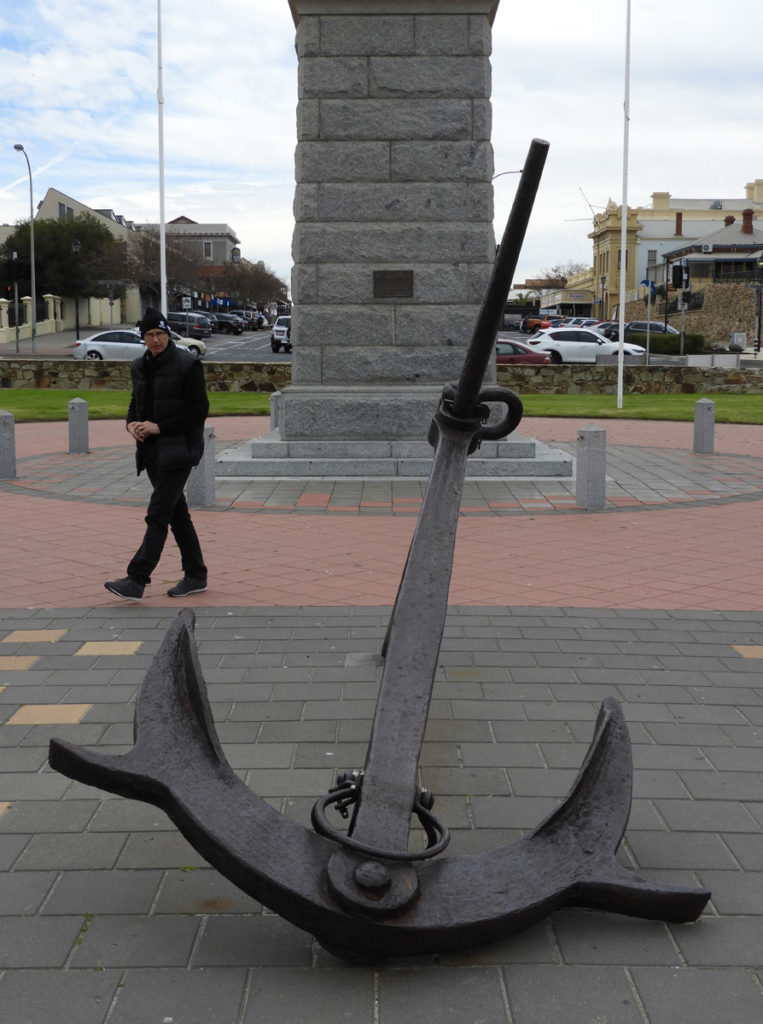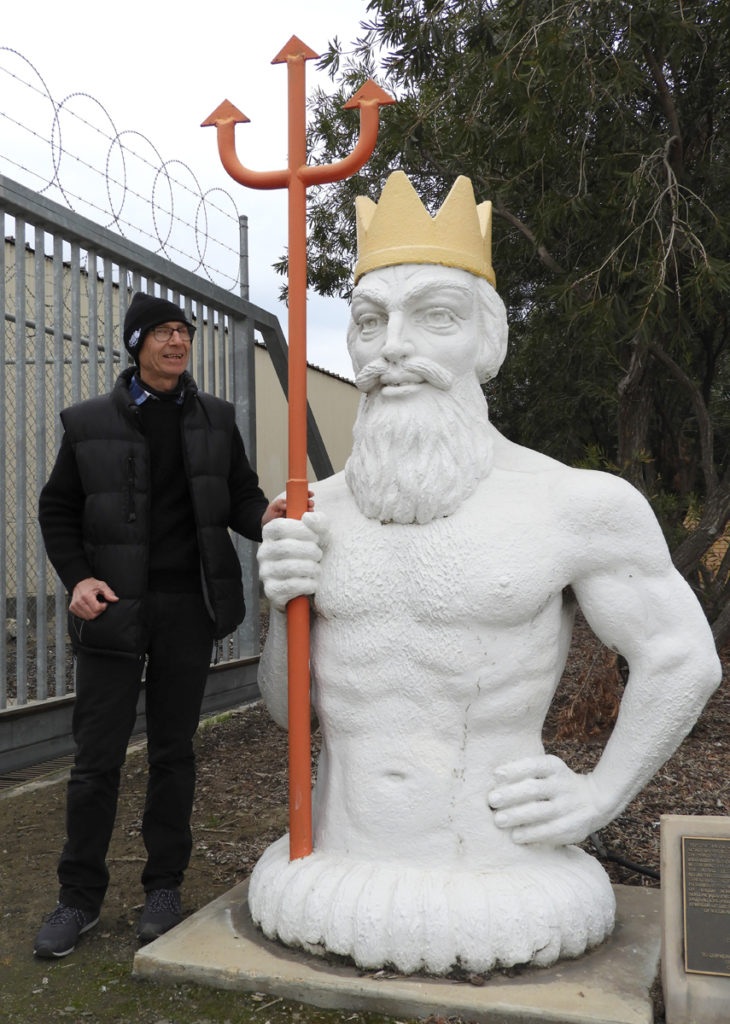The Marine Life Society of South Australia is pleased to announce that research and development on the Port Adelaide Anchor Trail is officially underway. The project was conceived in early 2019 by Society president Steve Reynolds, who has a life-long interest in the maritime history of South Australia. Steve first identified the potential to present the large historic anchors scattered around Port Adelaide and surrounding areas in a novel way. MLSSA Member and grant-writer Dan Monceaux then helped shape the idea and sought funding on behalf of the Society to develop it further. Steve remains the project’s lead researcher and author and the pair’s work is now funded by the City of Port Adelaide Enfield through their Placemaking grants program. The remainder of this article has been adapted from MLSSA’s successful grant application.
The Port Adelaide Anchor Trail
The Port Adelaide Anchor Trail project is currently researching and mapping large anchors in public space around Port Adelaide. These will then be linked via suggested walking and cycling trails. The project is intended to turn existing overlooked assets (large anchors in public space) into entry points for exploring Port Adelaide’s maritime heritage. The work ahead includes researching and designing, then printing and distributing trail brochures to selected venues around Port Adelaide. The addition of trail markers at anchor sites is beyond the scope of this first stage of the project.
Port Adelaide has a rich maritime heritage, reflected in such iconic places and structures as the South Australian Maritime Museum and the lighthouse on the inner harbour. But what other markers of the Port’s history in shipping lie scattered around the Port, and what stories might they evoke?
Amateur historian, long-time Port Adelaide resident and president of the Marine Life Society of South Australia, Steve Reynolds, recently began researching and photo-documenting large anchors around the Port Adelaide area. He found a wide variety of large anchors in a range of settings, which span many decades of maritime history. Eighteen (18) of them are in public space, four (4) are in maritime museums and (3) are on permanent display attached to vessels.
If they could speak, these anchors would tell rich tales of the sea and maritime trade. While a few are presented as public monuments and are accompanied by commemorative plaques, most are displayed outside sporting and social clubs, in road reserves or outside private businesses with little or no associated information. This is something this project hopes to remedy, to enrich their value through historic research, mapping and promotion.
Thanks to the Placemaking grant from the City of Port Adelaide Enfield, Steve can now apply his time and resources to focus on extending and completing his historic research. He will follow existing leads and dive into library, museum and online resources to explore each anchor’s history. He will then work with editor and designer Dan Monceaux to create an informative, colourful and engaging fold-out brochure and trail guide (in a single document). The brochure will include a map and will link the anchors to their maritime past through a series of interpretive walking and cycling trails. The brochure will be designed to appeal across generations, comparable in size and colour to the Wonderwalls A3 public mural map currently available at the Port Adelaide Visitors Centre). It will encourage older residents to explore a walking or driving trail with their grandchildren, while the more athletic may follow a trail by bicycle, and the less mobile, by car or scooter. All trail explorers will complete their excursions with a stronger sense of connection to the Port’s rich maritime history. The brochure could also include other key maritime icons of the Port, including the clipper ship and lighthouse.
Steve’s research work is well underway, with anchors already located, photographed and simply documented. He has recorded all the immediately available information at anchor sites, and where none was available, he has made inquiries of the anchors’ owners or neighbours. If you are reading this, and know anything about the history of an anchor that sits in public view in the greater Port Adelaide area, please contact us, or leave a comment below.
An avid reader of maritime history, Steve has already buried himself in research, reaching as far as the craft of anchor design and production. Dan Monceaux, who has worked previously as a professional writer of documentary films and an educational computer game and as state editor of a music culture website (inthemix.com.au), is well qualified to help him condense his findings into succinct and informative capsules of historic interest, ready for placement on the map/trail guide. Since the news of project funding, the pair has revisited the priority anchor sites, with Steve taking additional notes and measurements, while Dan had taken more photographs to assist with the planning process.
Where an anchor is unable to be linked to a specific ship (this is likely most of them), Steve expects to be able to link them to particular classes of vessels and use that to lead into historic commercial and industrial activities in the Port. The Marine Life Society of South Australia hopes that the Port Adelaide Anchor Trail’s informative fold-out map and brochure will also encourage a healthy active lifestyle by providing an incentive to walk or cycle while exploring the port’s maritime heritage.
The trail brochure will be officially launched at a special event in 2020.
Know something? You can help!
Do you know something about any of the large anchors visible to the public in Port Adelaide or surrounds? The Marine Life Society of South Australia is keen to hear from anyone with relevant social or maritime history knowledge to share. MLSSA is also seeking expressions of interest from potential project partners or contributors; from maritime history enthusiasts to students, cyclists and local residents to local businesses, organisations and any other potential distribution points for the trail brochure.






Hi Steve ,
I’ve just read the anchors trail project link and congratulate you and Dan on this wonderful team effort!
The only suggestion ,or should I say question that came to mind after reading the above is this.
Are you able to include (no matter how briefly because I realize that brochures need brevity and the main maritime history theme takes pride of place) some sort of mention that there is a marine life connection?
Even though the MLSSA heading sort of implies that, maybe a single sentence (could even be in brackets or as an appended reference) e.g. ” These anchors,while smaller than the wrecks they represent , when submerged afforded shelter for fish and other marine and estuary life. .So even as we marvel at the lovingly restored anchors on this terrestrial trail we take delight in knowing they are also totems to the unseen. Each anchor reminds us that somewhere in DJ’s locker ,or even in the intertidal shallows, lies an ecologically valuable focus for many weird and wonderful animals and plants – for wrecks ,even if reduced to a few barnacled timbers ,are exactly that “.
Hey ,how’s the brevity?(lol)
Regards
Dave Muirhead
Hi David
Yes, perhaps. We were just discussing such.
A newspaper article re the Semaphore Anchor can be found here http://nla.gov.au/nla.news-article55848303
Thanks Meredith, we may have seen this early on, but we will take another look at the details.